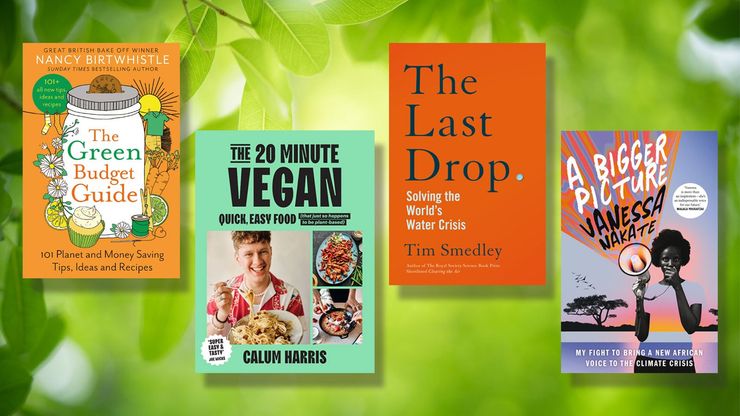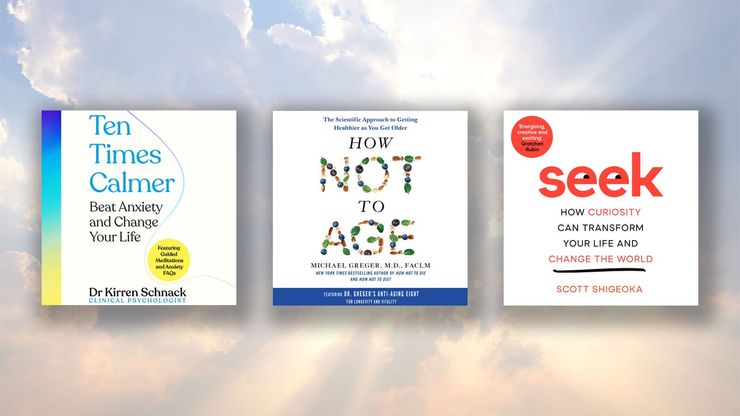You don’t need to be a millionaire to slow the effects of ageing
Dr Michael Greger's seven recommendations for living a longer, healthier life.

Michael Greger, MD, is a doctor, the bestselling author of How Not to Die and new book, How Not to Age, and an internationally recognised speaker on nutrition and food safety. Here, he explains how you can slow ageing, and boost anti-ageing, without breaking the bank.
In medical literature, the anti-ageing field is described as a “fertile ground for cons, scams and get-rich-quick schemes,”1 and mainstream marketers often prey on vulnerable elders with quack ageing remedies – everything from wrinkle creams to the late televangelist Pat Robertson offering 'Pat’s Age-Defying Protein Pancakes.' Ageing may not be good for health, but it’s certainly good for business.
In reality, there may be no such thing as dying from old age. From a study of more than 42,000 consecutive autopsies, centenarians – individuals who celebrate their hundredth birthdays – were found to have succumbed to diseases one hundred percent of the time. Though most were perceived to have been healthy just before death, they died from disease, most commonly heart attacks. Not one 'died of old age.'
In my new book, How Not to Age, I identify the most promising pathways for slowing ageing and recommend practical proposals for targeting them naturally with diet and lifestyle changes. I highlight specific foods, supplements, or behaviors that have the potential to offer some of the best opportunities to slow ageing or improve longevity – and you don’t have to break the bank to slow ageing and boost anti-ageing.
Here are my top seven recommendations for living a longer, healthier life.
1. Plants for the win
According to the Global Burden of Disease study, the most comprehensive and systematic analysis ever undertaken of the causes of death, the number one killer on Earth is a bad diet. Unhealthy diets shave hundreds of millions of disability-free years off of people’s lives annually. What are the healthiest foods? Based on dietary surveys among the healthiest, longest-lived populations, the top recommendation of the Blue Zones (areas of the world where people live the longest) Food Guidelines is to “see that your diet is 95%–100% plant-based.”
2. Beans should be a staple
In terms of particular plant foods, the Global Burden of Disease study found that the largest life expectancy gains would be expected from eating more legumes – beans, split peas, chickpeas, and lentils. They’re the most concentrated sources of fibre and resistant starch, which help the good bacteria in our gut produce beneficial byproducts that can reduce inflammation, boost immunity, and improve muscle strength.
3. Nuts are the healthiest snack
Legumes rule the roost on a per-serving basis, but ounce-per-ounce, nuts are associated with the lowest risk of premature death compared to any other food group. I recommend about a palmful of walnuts a day, preferably raw and definitely unsalted.
4. Greens are the healthiest vegetable
Of all veg, dark green leafies are most associated with a longer lifespan. Their nitrates can improve age-related declines in muscle and artery function, as well as slow our metabolic rate, and there is a compound in broccoli, cauliflower, and other cabbage-family vegetables that can boost our immune function and the detox enzymes in our liver and airways.
5. Berries are the healthiest fruit
The bright anthocyanin pigments in berries are thought to account for their benefits for cognitive function, eyesight, inflammation, blood sugar, artery function, and cholesterol. Since they can get cleared from our bloodstream within six hours, get some at every meal – perhaps berries for dessert, hibiscus tea, or savory sources of these compounds, like purple cabbage or purple sweet potatoes.
6. Swap meat
Replacing just three percent of daily calories from animal protein to plant protein is associated with a significantly lower risk of premature death in the largest prospective study on diet and health in history. Plant protein beat out every type of animal protein, including fish, chicken, eggs, and dairy, for decreasing mortality risk. Eating a hamburger appears to cut one’s life as short as smoking two cigarettes. If it wouldn’t even occur to you to light up before and after lunch, maybe you should choose the bean burrito instead.
7. Prevent falls to prevent bone breaks
Weight-bearing exercise can improve bone strength, but most osteoporotic fractures are more a function of falls than bone density. So, fall prevention is the single most important intervention, which can be accomplished with a combination of lower-limb strength exercise and balance training. Prunes, onions, tomatoes, and almonds, as well as large quantities of fruits and vegetables in general, may have bone-protective effects. Calcium supplements and high dairy consumption should be avoided, along with alcohol and soda.
In How Not to Age, I explore the plethora of pills and procedures and salves, supplements, and specific foods that can help reduce wrinkles, grow hair, shrink prostates, and enhance vision, dentition, erection, cognition, and so on. But the foundation of an optimal anti-ageing regimen is a healthy diet, which is good news, because you hold the power.
The How Not to Age Cookbook
by Michael Greger MD
In How Not To Age, Dr Michael Greger revealed that a healthy diet is one of the most promising strategies for combating the effects of aging. The How Not To Age Cookbook brings together these decades of scientific research into more than 100 recipes to help you live well for longer. These simple, nutrition-packed dishes make use of ingredients that have been proven to promote a healthy lifespan and inspiration from the places around the world where people traditionally live the longest.
How Not To Age
by Michael Greger MD
Author and founder of NutritionFacts.org, Dr. Michael Greger, deciphers the myriad claims around longevity and health maintenance. Drawing inspiration from diet and lifestyle habits of the world's centenarians and ‘blue zone’ regions where people live the longest, Greger provides simple evidence-backed methods to preserve the body's functions that keep us feeling youthful. He answers questions like, "Can an apple a day keep the doctor away?" or "Are carrots or berries better for your eyesight?" How Not to Age is filled with practical strategies for enjoying a long, healthy life – and for enjoying every moment of it.
1: Reddy SSK, Chaiban JT. The endocrinology of ageing: a key to longevity "great expectations." Endocr Pract. 2017;23(9):1110-9.




